
views
- Reach out to a professional for help. In the US, call or text 988. In the UK, call 116 123. In Australia, call 13 11 14.
- In other countries, visit one of these sites to find a hotline: befrienders.org, suicide.org, the IASP website.
- For online messaging, visit 988lifeline.org. If you're LGBTQ in the US, call 1-888-843-4564 or 1-866-488-7386.
Dealing with an Immediate Crisis

Call a suicide hotline. You do not need to go through this alone. For 24-hour help in the United States, call or text 988; in the UK call 116 123; and in Australia call 13 11 14. For hotlines in other countries, visit befrienders.org, suicide.org or the IASP website. If online text chat is easier for you, find a service in your country. In the US, try 988lifeline.org. For TTY (Text Telephone) services in the US, dial 1-800-799-4TTY (1-800-799-4889). If you're gay, lesbian, bisexual, trans, or sexually self-questioning in the US, call 1-888-843-4564 or 1-866-488-7386.
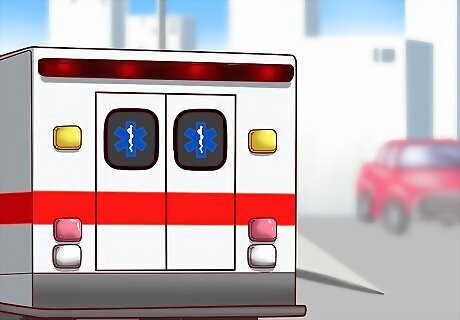
Seek emergency services. If you have a plan to die by suicide, get to the hospital or ask someone to drive you there. You'll receive professional treatment and stay in a safe place until you're no longer in danger of harming yourself. Call an emergency number immediately if there's a chance that you will make the attempt before you get there, or if you have already taken steps to seriously harm yourself.

Find a friend. Never let shame, embarrassment, or fear stand in the way of seeking help from friends. Call up someone you trust and talk for as long as you need to. Ask them to come stay with you until you can safely be alone again. Say exactly what you are thinking and/or planning, so your friend understands how serious this request is. It may be easier to write the friend an email, a letter, or a chat, even if you are sitting next to her. If the crisis lasts for an extended period, arrange other friends to be with you on a rotating schedule, or ask your friend to arrange this for you.

Get professional help. You have a serious condition that needs to be treated by an expert, just like someone with a broken leg needs to see a doctor. In fact, calling your doctor is a good place to start. Alternatively, a hotline may already recommend you to a counselor, psychiatrist, or psychologist in your area, or you can find one in your local phone book or through searching online. It is also possible to talk to an online therapist. A therapist can work with you to make all of the coping steps below easier, and to identify specific treatments that can help you. She may refer you to a psychiatrist, who can prescribe medication.
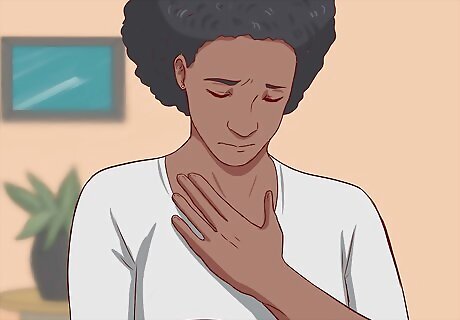
Give yourself time. While waiting for help to arrive, distract yourself for as long as you can with a shower, a meal, or a busy activity. Take deep breaths and make a promise to yourself that you aren't going to take your life for at least 48 hours, and not before seeking professional attention. As hard as it might be, put off your plans for two days to give yourself a more time to rest and think things through. Right now suicide might seem like the only option, but circumstances can quickly change. Promise to give yourself at least two more days to find a better option, or reason to keep looking. Try to see your emotions and actions as separate. The pain can feel so overwhelming that it distorts your thoughts and behavior. But thinking about suicide isn't the same thing as going through with it. You still have the power to make a choice not to take your life.
Finding Ways to Cope

Watch out for warning signs. In an intense emotional state, you may underestimate your own ability to take your life. Regardless of how you feel, seek help if you experience any of these warning signs, using the resources described in the crisis section: Social isolation, withdrawal from friends and family, thoughts of not belonging or being a burden Extreme self-hatred, feelings of hopelessness Sudden mood changes (including for the better), rage outbursts, low tolerance for frustration, agitation or anxiety Increase in alcohol or drug use Insomnia or severely disrupted sleep Talking about suicide, planning it, or acquiring tools for suicide While self-harm is not the same as suicide attempts, the two are strongly linked. Seek immediate attention if you inflict serious or frequent self-harm, including punching walls, pulling out hair, or scratching your skin.
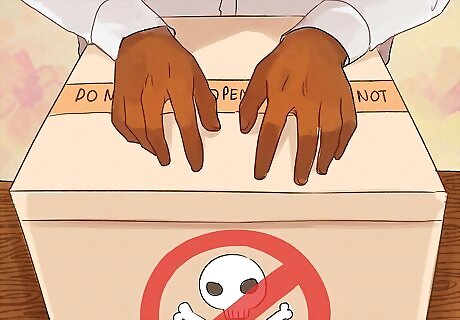
Make your home safe. Having easy access to dangerous items increases the chance of suicide. Don't make it easy to change your mind. Lock away anything you could use to harm yourself, like pills, razors, knives, or guns. Give them to someone else for safekeeping, throw them away, or put them in a place that's not within easy reach. Minimize alcohol and drug use. Despite the temporary good feelings, they can make depression worse or harder to deal with. If you don't feel as though you'll be safe in your own home, go somewhere where you do feel safe. Stay with a friend, or go to a community center or another public place where you can hang out.

Share your thoughts with people you trust. Your support system is very important when you're dealing with suicidal thoughts. You need people you can trust to hear you out without judging you for feeling despair or trying to give advice that hurts more than it helps. Even well-meaning people can sometimes make you feel guilty or ashamed for feeling suicidal. Try to spend time with people who will listen and care for you without judgement instead. If you aren't comfortable sharing with anyone in your life, read about the award-winning, global Buddy project on their twitter page, and sign up for a buddy here.

Find other people's stories. Reading, watching, or listening to stories from other people who have battled suicide will show you that you are not alone, and can teach you new coping tactics or inspire you to keep fighting. Try the lifeline collection or the Reasons to Go On Living project.
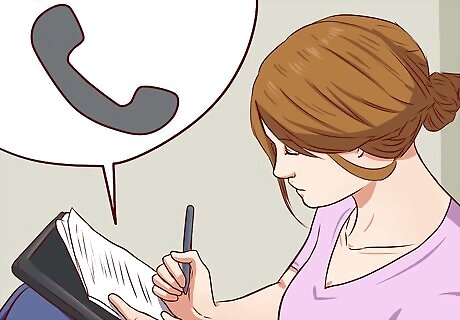
Make a safety plan to pull out when the thoughts come. This is a personalized plan you can use to help you stop thinking about suicide when your thoughts start to get overwhelming. Try filling out the coping kit, or read it over to get an idea of what belongs on this plan. Here's an example of a basic safety plan, although adding warning signs and specific numbers is a good idea: 1. Call someone on my list of people I can talk to. Write a list of five names or more, including 24-hour suicide hotlines. In a crisis, keep calling people on the list until I reach someone. 2. Delay my plan for 48 hours. Promise myself that I won't take my life before thinking through other options. 3. Ask someone to come stay with me. If no one can come, go to a place where I feel safe. 4. Go to the hospital. Drive myself or have someone take me. (It's not recommended that you drive yourself, as you might take reckless actions when driving due to a "death wish", so it's better to have someone else take you to the hospital, such as a trusted friend or one of your parents). 5. Call emergency services.
Addressing Causes after Calming Down

Continue therapy. Good-quality therapy is an excellent resource to treat depression even after the crisis has passed, or even just for constructing positive changes in your life. The advice below may help get you started, but it is not a substitute for personalized, professional attention.
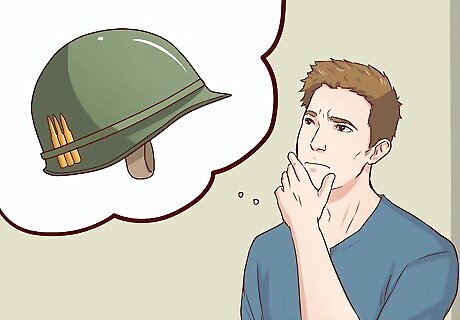
Think about why this is happening. When you're in a calmer, safer mental state, think deeply about why this is happening to you. Is it something that's happened before, or is this the first time? Suicidal thoughts can be caused by many different things, and it's really important to figure out what's at the root so that you can see your situation objectively and take the right approach to stopping the thoughts. Depression, schizophrenia, bipolar, PTSD and other mental conditions often lead to suicidal thoughts. These conditions can often be treated with therapy and medication. Make an appointment with a therapist and start exploring treatment options if you have a mental condition that's causing you to feel suicidal. If you're a veteran or you've experienced bullying, abuse, poverty, unemployment, major illness, or loss, you are at increased risk of suicide. It's important to get support from people who have been there and understand what you're going through. Support groups exist for all of these conditions. Certain events or circumstances can lead us to feel helpless, isolated, or burdensome - feelings which often lead to suicidal thoughts. But even though it's impossible to see it right now, these circumstances are temporary. Things will change, and life will get better again. If you don't know why you're feeling suicidal, it's important to work with a doctor, therapist, or counselor to find out what's going on.
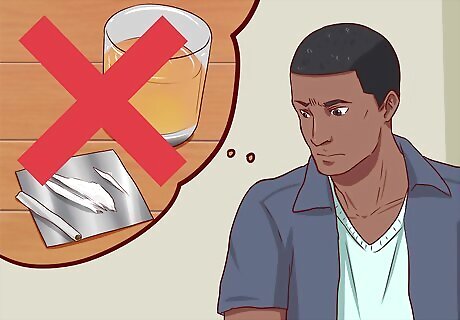
Identify your triggers. Sometimes suicidal thoughts get triggered by certain people, places or experiences. It's not always easy to figure out whether a trigger is at play. Think back and see if you can recognize patterns that might clue you in as to whether your suicidal thoughts come as a result of certain experiences, and avoid those experiences in the future if you can. Here are a few examples of factors that can trigger crises: Drugs and alcohol. The chemicals in drugs and alcohol can often make depressive thoughts turn suicidal. Abusive people. Spending time around a person who is physically or emotionally abusive can trigger suicidal thoughts. Books, movies, or music that trigger tragic memories. For example, if you have lost a relative to cancer, you may wish to avoid films about cancer patients.

Learn how to cope if you hear voices. Some people hear voices or a voice telling them to behave in a certain way. This situation has traditionally been considered a symptom of mental illness that is treated with heavy medications, but recently mental health organizations and voice hearers have been recommending alternate methods of coping. Try contacting Intervoice or Hearing Voices to discover support networks and long-term coping advice. In the short term, these approaches may help: Plan your day around the times when you most commonly hear voices. Some people prefer to relax or shower during those times, while others like to stay busy. Listen to voices selectively, concentrating on positive messages if there are any. Rephrase nasty statements to neutral ones, and use the first person. For example, turn "We want you to get out" to "I'm thinking of going out."

Get the care you need. No matter why you're having suicidal thoughts, taking steps to get some kind of care is the only way to make them stop. Having an action plan for coping in the moment, and doing longer-term work to figure out your feelings and alter your situation can help you feel better again. If you're not sure where to start, contact a suicide prevention hotline such as the 988 Suicide and Crisis Lifeline if you're in the United States (which can be reached by calling or texting 988), and ask for help finding resources you can turn to in your area. Figuring out a treatment plan isn't always easy. You'll need to connect with a therapist you like working with and who uses an approach that works, and you may opt to try a medication or a combination of medications that could take awhile to remedy the problem. It's OK if you don't get immediate results - the important thing is to keep trying. Keep using your safety plan when you need to and working toward feeling better. For some people, suicidal thoughts come and go throughout life. But you can learn how to cope with the thoughts when they come and have a full, satisfying life, no matter what.















Comments
0 comment